A bicycle without a chain: The belt drive as an alternative
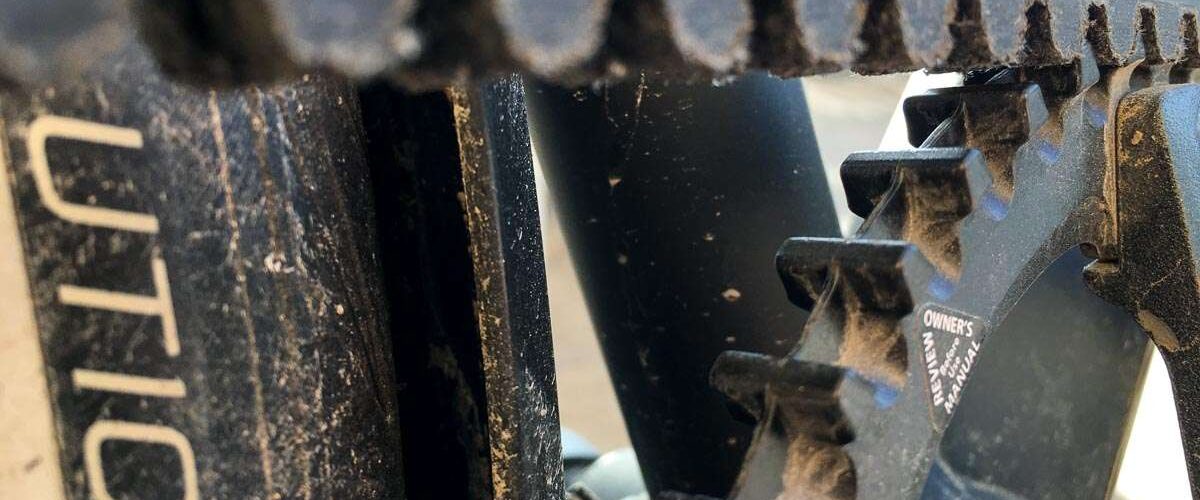
This is a very personal and subjective post about my experience with a bicycle with a belt instead of a chain.
Why did I choose a belt?
For the record, I cycle to work every day. And I mean EVERY day. You can count on one hand how many times a year I drive my 4.5 kilometres to work.
My previous bike had standard Shimano XT-something gears and I was constantly maintaining the chain. But every one or two years, despite diligent cleaning and greasing, a new chain was due. The many rides through rain and mud, and in winter the snow and salt, put a lot of stress on the chain, chainrings and sprockets. The entire gear system with all its moving, exposed parts suffers.
I no longer wanted to put up with all these disadvantages on my commuter bike. Since my bike was already a few years old anyway, I decided to go for a belt drive.
Where do I see the advantages?
Belt
With a belt there is always a hub gear, because the belt is not flexible like a chain and cannot jump from one sprocket to the next. It therefore always runs exactly parallel on its pulleys. The belt itself is made of polymer/carbon fibres. It is not affected by wetness, snow or salt. The front pulley on my bike is made of plastic, the rear one of stainless steel. So there’s no danger of wear there any time soon either. There are no moving chain links and it’s not metal on metal like a chain, but carbon on plastic or carbon on metal.
Hub gears
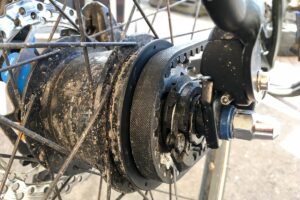
The advantage of hub gears is clearly that there are no external parts. Everything takes place inside the hub and is therefore protected from the weather. The Cube Travel SL I chose has a Shimano Alfine SG-S700 gear system with 8 gears. This is perfectly adequate for me and my flat commute. But even in hilly terrain I have no problems with it.
I also think that the belt and hub gears in combination are lighter than a complete chain/shift set. I also have only one gear lever with the hub gears, for example.
Are there any disadvantages?
Well, one small disadvantage, at least with exactly my Alfine SG-S700 hub gears, is that the fourth gear is somewhat “noticeable”. You can feel through minimal vibrations that the power is being translated there. Fifth gear has a direct transmission, which means that the power is not diverted via additional gears. But that doesn’t bother me. I hardly ever use fourth gear. On flat terrain, I only ride in 5th, 6th and 7th gear. If there’s a strong tailwind, I also shift into eighth for a short time. All gears above fourth run completely vibration-free and silently. At times, I don’t have to change gears even once during my ride.
What is my experience with the belt and the Travel SL so far?
I have been riding my new Cube Travel SL trekking bike for almost five months now and I am completely satisfied with it. I’ve ridden it through the whole winter and haven’t had to take care of the bike or the belt once. Well, it looks the part, as you can see from the pictures. A big spring clean is planned as soon as the temperatures are back in the positive double digits.
The bike runs much easier than the old one with the chain. There is no noise coming through to me from the belt. I could very well do without a suspension fork, which I had locked on the old bike anyway. That saved additional weight. The bike is also more torsionally stiff, which is especially noticeable when accelerating.
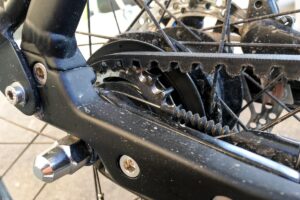

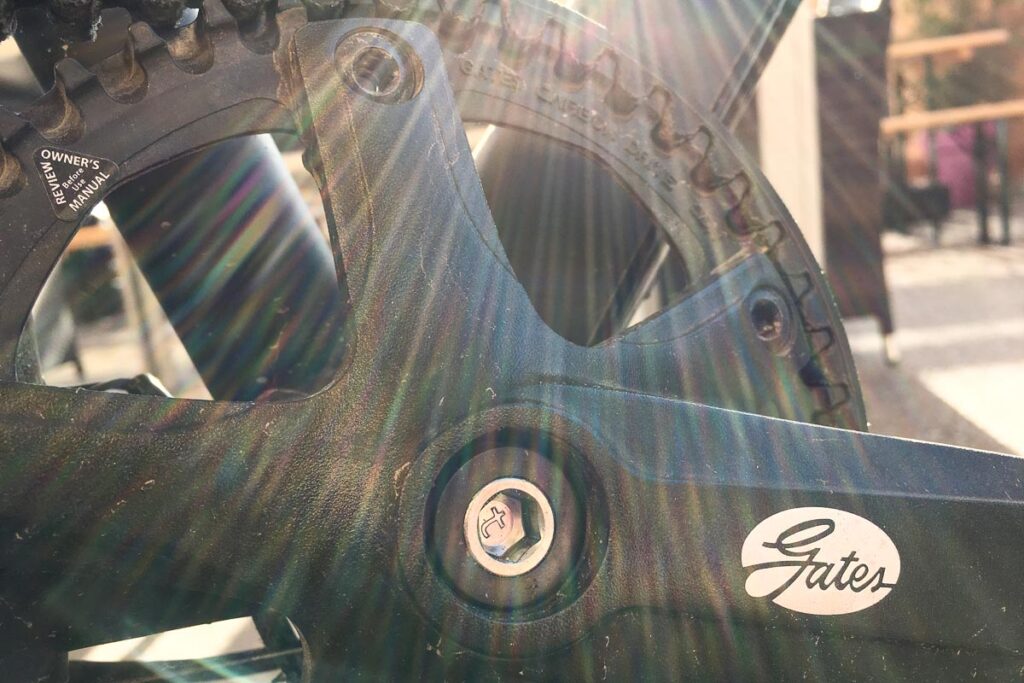
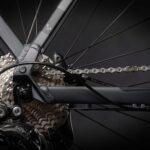
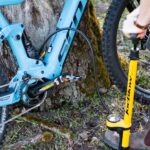

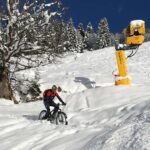

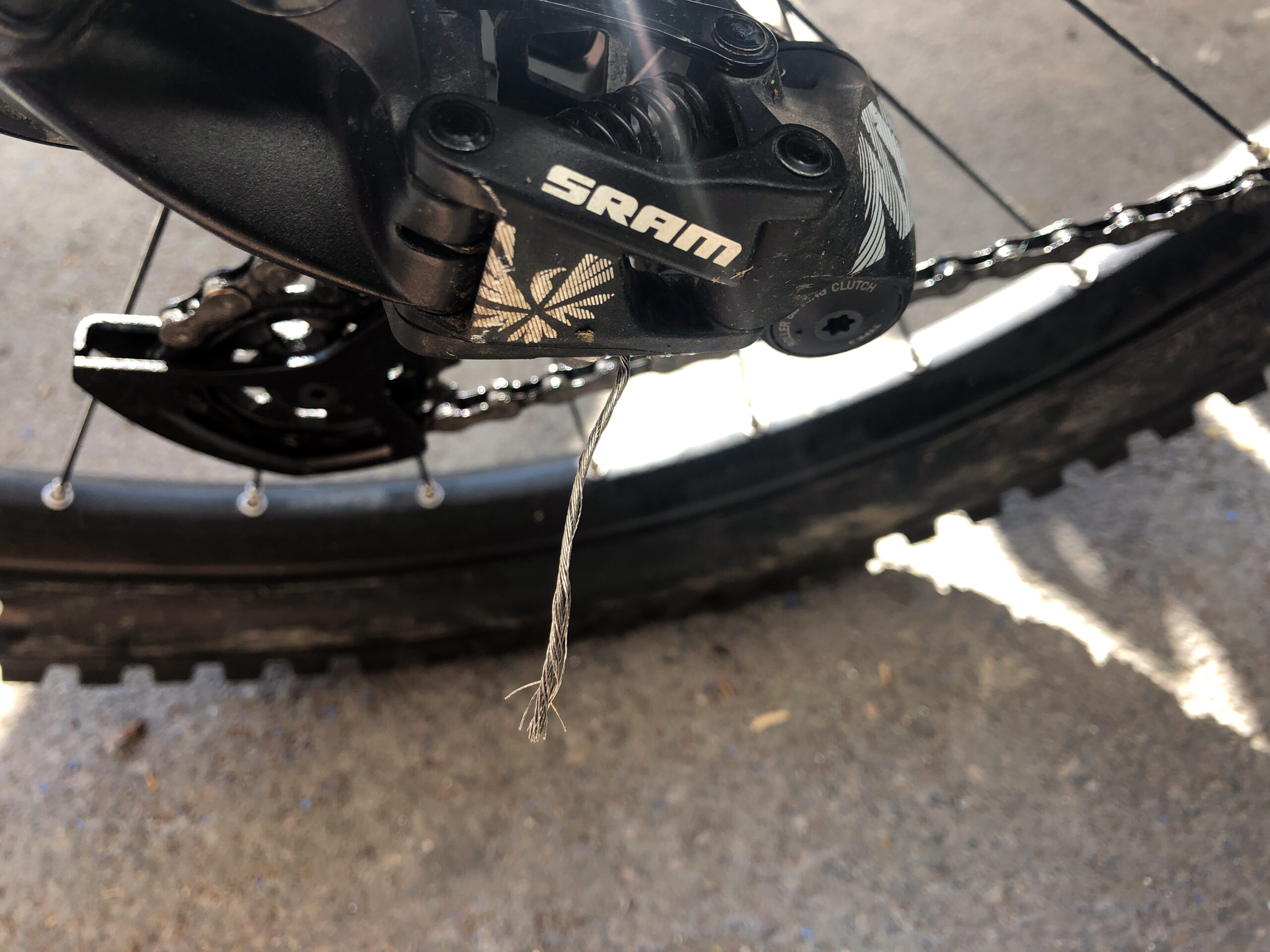
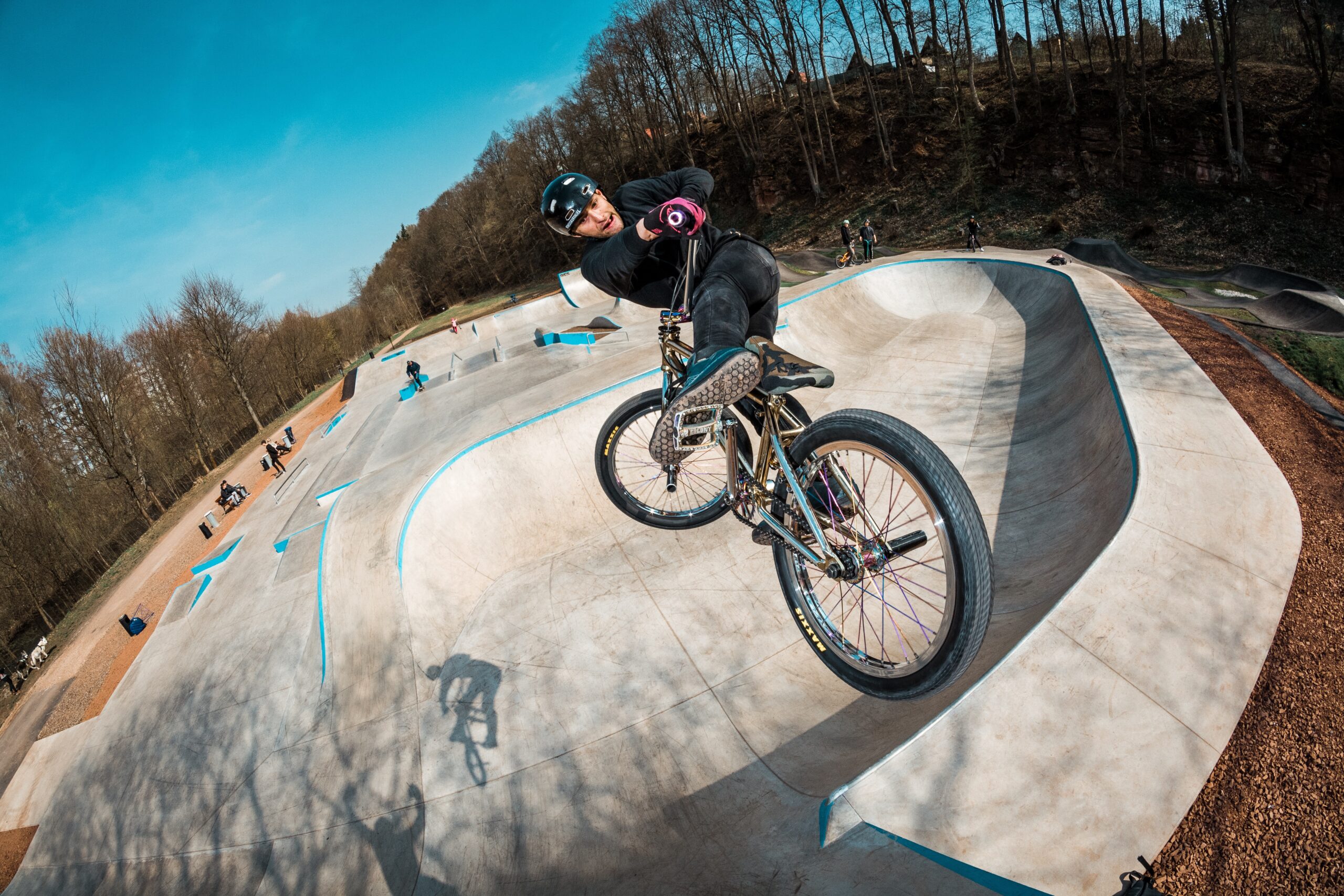
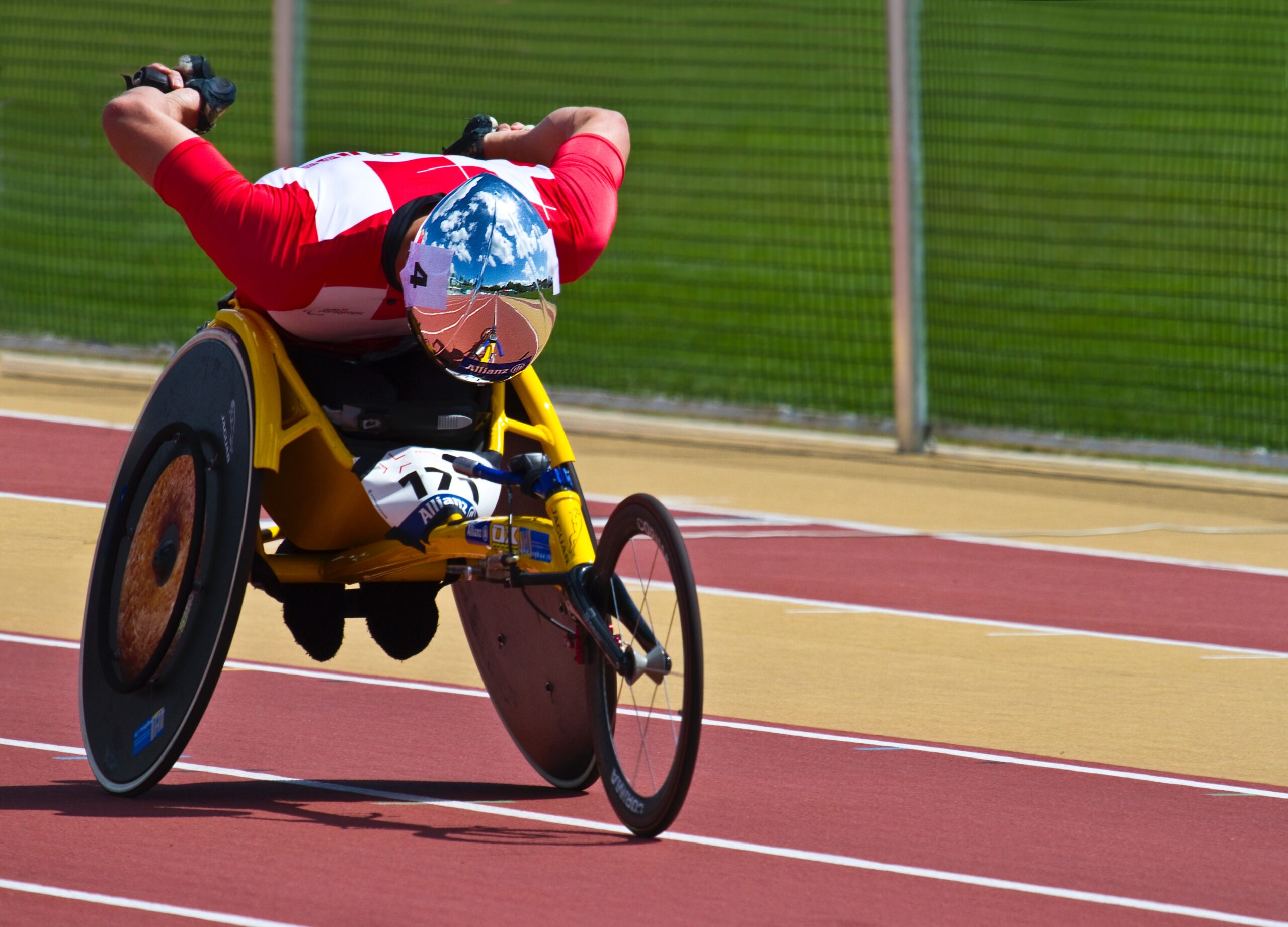
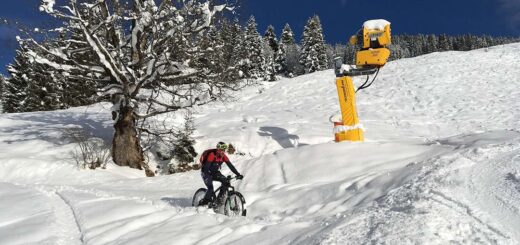

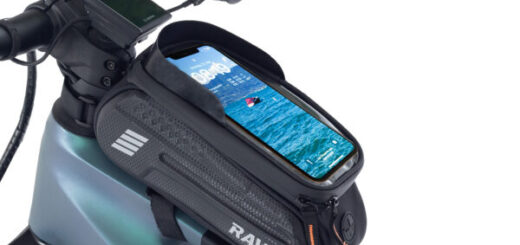








Recent Comments